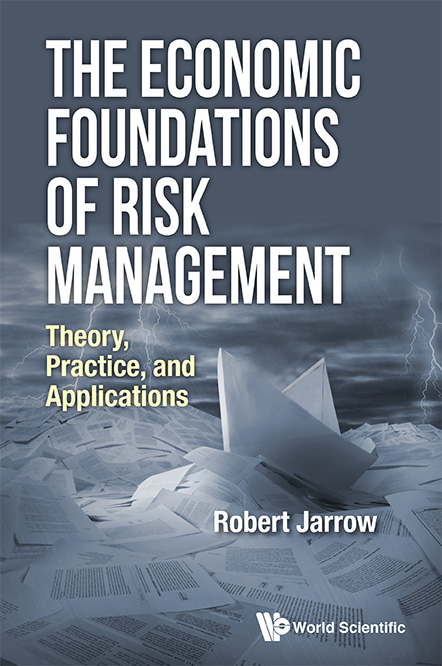Understanding Risk Management

Robert Jarrow’s new textbook, The Economic Foundations of Risk Management, aims to give MBA students a solid understanding of the economic models used to manage business and portfolio risk.
With The Economic Foundations of Risk Management: Theory, Practice, and Applications (World Scientific Publishing, December 2016), Robert Jarrow continues his efforts to demystify investment valuation and risk management. Jarrow, the Ronald P. and Susan E. Lynch Professor of Investment Management at Johnson, is one of the field’s leading experts (and practitioners), but his new book is not intended for would-be financial engineers. Instead, it aims to give MBA students a solid understanding of the function, theoretical underpinnings, and limitations of the complex economic models on which modern risk management strategies are founded.

“Risk management has become very quantitatively oriented,” Jarrow says. In part, this is in response to financial regulation, but also because of the complexity of today’s markets and institutions and the bewildering variety of financial instruments now traded.
“You have to quantify risk to measure it,” Jarrow says, “but most MBA students aren’t exposed to the risk models.” As a result, MBAs often view them as mysterious “black boxes,” don’t understand their logical structure or how to use them, and treat their results with either great skepticism or excessive deference.
“Risk models are not oracles. They are useful tools, but not the whole answer,” Jarrow explains, adding that MBAs need to have a holistic understanding of how models fit into a larger strategy for managing risk.
“Risk models are not oracles. They are useful tools, but not the whole answer.”
In pursuit of that understanding, the book delineates categories of assets and risk, showing what can be modeled economically — and how — in clear language and in mathematics. Jarrow argues that the math is important for a clear understanding of the concepts involved, and that his approach is to “show students the equation, but reduce their fear.”
Derivative securities’ values are founded on those of underlying primary assets, such as stocks, bonds, and commodities. Complex assets can be valued, and their risks modeled, by using combinations of simpler assets that replicate their cash flows, in conjunction with calculation of their “state price density,” a risk measure that integrates their value across all potential economic scenarios.
The book delineates the four fundamental categories of risk — market, credit, liquidity, and operational — and adds a fifth: funding risk. Funding risk, which stems from the combination of liquidity risk and trading constraints, particularly margin requirements and borrowing limits, brought down many of the firms that failed or received bailouts during the 2007–2008 financial crisis.
The book also focuses on risk optimization and managing risk. It concludes with case studies of notorious financial failures. Some firms were brought down by operational problems and lack of internal controls, rather than a failure to properly model risks. Barings Bank, for example, a storied two-century-old British institution, gave a 24-year-old trader in Singapore unlimited access to its capital, no trading limits, and the authority to settle his own transactions. He lost $1.3 billion speculating on Nikkei index futures, and the bank collapsed. Other failures might have been averted by better risk modeling, or by a clearer understanding of what risk modeling revealed.
Jarrow draws three lessons for managers from the cases: understand your returns, set up proper incentives, and control funding risk. Risks are managed not just by hedges and diversification, but also by close attention to operational controls, auditing, and accounting. And interestingly, Jarrow, one of the world’s foremost financial engineers, is emphatic about the importance of human management in controlling risks: “Understand your people and what is motivating their performance.”
Jarrow’s previous book, An Introduction to Derivative Securities, Financial Markets, and Risk Management, co-authored with Arkadev Chatterjea, was the first derivatives textbook for non-specialists. His new book extends his effort to illuminate the workings of derivatives markets and risk modeling. “In a world where trillions of dollars of complex securities trade each year,” Jarrow says, “it’s not safe for MBAs to not understand them and the risks they entail.”
